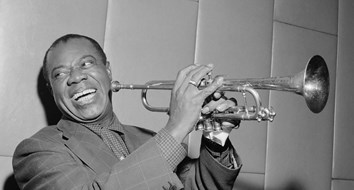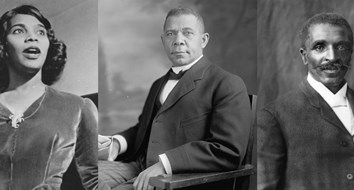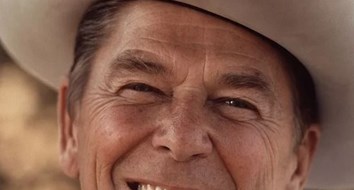[This column was adapted from one published first by the Mackinac Center for Public Policy on its website in February 2007.]
A television audience in the millions will feast on the glitz and glamor of Hollywood when the 81st Annual Academy Awards are bestowed February 22. My thoughts will be elsewhere that Sunday night—on a friend who won an Oscar 24 years ago. Three days later, February 25, will mark the 13th anniversary of the day he was killed.
On the night of the 57th Oscars in 1985, Amadeus claimed Best Picture, F. Murray Abraham won for best actor, and Sally Field for best actress. Then came the announcement of the winner of the award for best supporting actor. To the stage bearing the widest grin of his life bounced a man few Americans had ever heard of. He had acted in only one motion picture. He had been trained as a physician in his native Cambodia, where he had witnessed unspeakable cruelty and endured torture before escaping and finding his way to America barely five years earlier. He was Dr. Haing S. Ngor.
Ngor’s Oscar-winning performance in The Killing Fields gave him a platform to tell the world about the mass murder that occurred between 1975 and 1979 in Cambodia at the hands of the Khmer Rouge communists.
When I met Ngor at a conference in Dallas a few months after Oscar night, I was struck by the intensity of his passion. Perhaps no one loves liberty more than one who has been denied it at the point of a gun. We became instant friends and stayed in frequent contact. When he decided to visit Cambodia in August 1989 for the first time since his escape ten years before, he asked me to go with him. Dith Pran, the photographer Ngor portrayed in the movie, was among the small number in our entourage. Experiencing Cambodia with Ngor and Pran so soon after the genocide left me with vivid impressions and lasting memories.
But Cambodia in 1989 was still a universe away from the Cambodia of 1979. In spite of the country’s continued suffering on a grand scale, I knew it was a playground compared to the three and a half years that Ngor and Pran lived through and miraculously survived.
During that time, crazed but battle-hardened and jungle-toughened revolutionaries who had seized power in 1975 set about to remake Cambodian society. Their leader, Pol Pot, embraced the most radical versions of class warfare, egalitarianism, and state control. Mao and Stalin were his heroes. In the warped minds of Pol Pot and his Khmer Rouge hierarchy, the “evils” they aspired to destroy included all vestiges of the former governments of Cambodia: city life, private enterprise, the family unit, religion, money, modern medicine and industry, private property, and anything that smacked of foreign influence. They savaged an essentially defenseless population already weary of war. The Khmer Rouge manufactured the killing fields for which the film was later named.
One day after taking power, the Khmer Rouge forcibly evacuated the populations of all urban areas, including the capital, Phnom Penh, a city swollen by refugees to at least two million inhabitants. Many thousands of men and women—including the sick, elderly, and handicapped—died on the way to their “political rehabilitation” in the countryside. Survivors found themselves slaving away at the most grueling toil in the rice fields, often separated from their families, routinely beaten and tortured for trifling offenses or for no reason at all, kept hungry by meager rations, and facing certain death for the slightest challenge to authority.
Thon Hin, a top official in the Cambodian foreign ministry at the time of our 1989 visit, told me of the propaganda blasted daily from speakers as citizens labored in the fields: “They said that everything belonged to the state, that we had no duty to anything but the state, that the state would always make the right decisions for the good of everyone. I remember so many times they would say, ‘It is always better to kill by mistake than to not kill at all.’ ”
Churches and pagodas were demolished and thousands of Buddhist monks and worshippers were murdered. Schools were closed down, and modern medicine was forbidden in favor of quack remedies and sinister experimentation. By 1979 only 45 doctors remained alive in the whole country; more than 4,000 had perished or fled. Eating in private and scavenging for food were considered crimes against the state. So was wearing eyeglasses, which was seen as evidence that one had read too much.
Early estimates of the death toll from starvation, disease, and execution during Pol Pot’s tyranny ranged as high as three million—in a nation of only eight million inhabitants when he took power. Most now put the figure in the neighborhood of two million deaths.
Haing Ngor didn’t just see these things; he endured them. He had to get rid of his eyeglasses and disappear as a doctor. He reappeared as a cab driver, hoping he and his wife would not draw the attention of the Khmer Rouge. Nonetheless, on more than one occasion, he fell prey to their brutality. In one torturous episode, one of his fingers was sliced off. In another, his wife died in his arms from complications during childbirth. Ngor’s skills as a physician might have saved her, but he knew if he revealed he was a doctor they both would have been executed on the spot. He eventually escaped Cambodia through Thailand, landing in America in 1980, a year and a half after a Vietnamese invasion eradicated the Khmer Rouge regime.
Haing Ngor believed the world must know these things, fully and graphically. When fate led to a chance to act in a movie about the period, he grabbed it and performed brilliantly. He deserved the Oscar it earned him, even though he often said that he really didn’t have to “act.” He had personally suffered through calamities much worse than those depicted in the film. He was driven to do well so that the rest of us would remember what happened and those to whom it happened.
One cold morning in February 1996 I learned that Dr. Haing S. Ngor had been shot and killed the day before—not somewhere in Southeast Asia, but in downtown Los Angeles. The perpetrators, it turned out, were ordinary gang thugs trying to rob him as he got out of his car. They took a locket that held the only picture he still had of his deceased wife.
For Haing Ngor, rediscovering his freedom after experiencing hell on earth wasn’t enough. He couldn’t relax, breathe sighs of relief, or resume living a quiet or anonymous life. He felt compelled to tell his story so others would know what awful things total government can do. He forced us to ponder and appreciate life more fundamentally than ever before.
Enjoy the Oscars on February 22. We should be thankful for people like Haing Ngor, who did more to educate for liberty in a few short years than most people who take their liberty for granted will ever do in their lifetimes.





